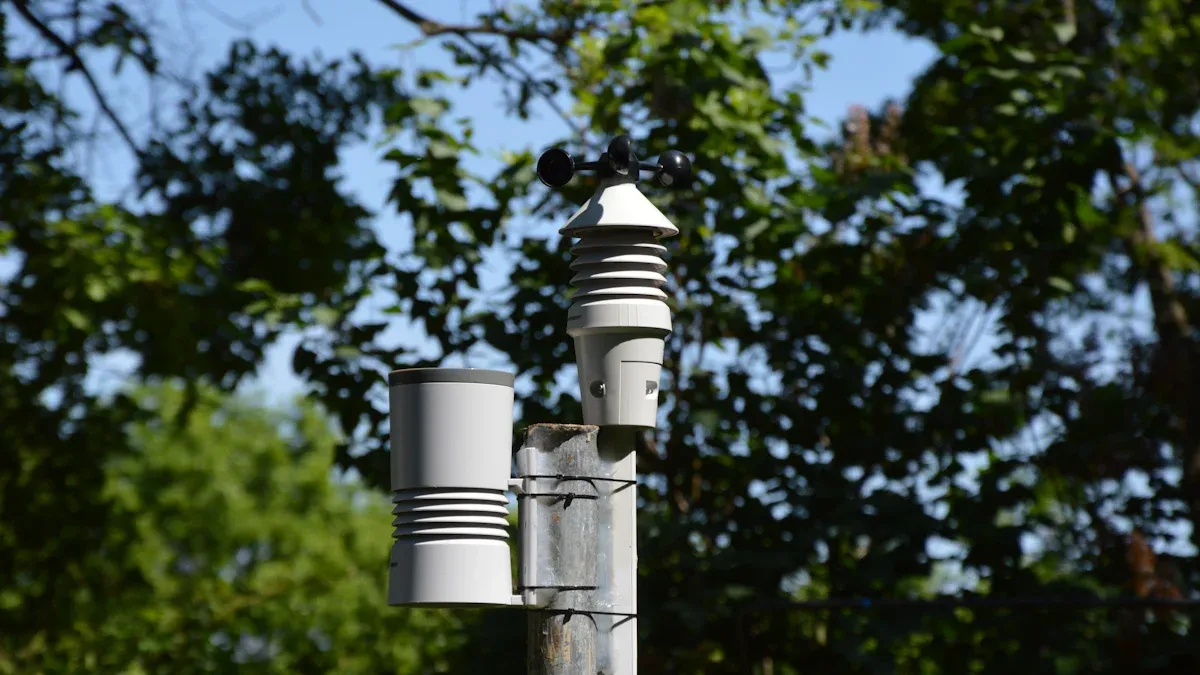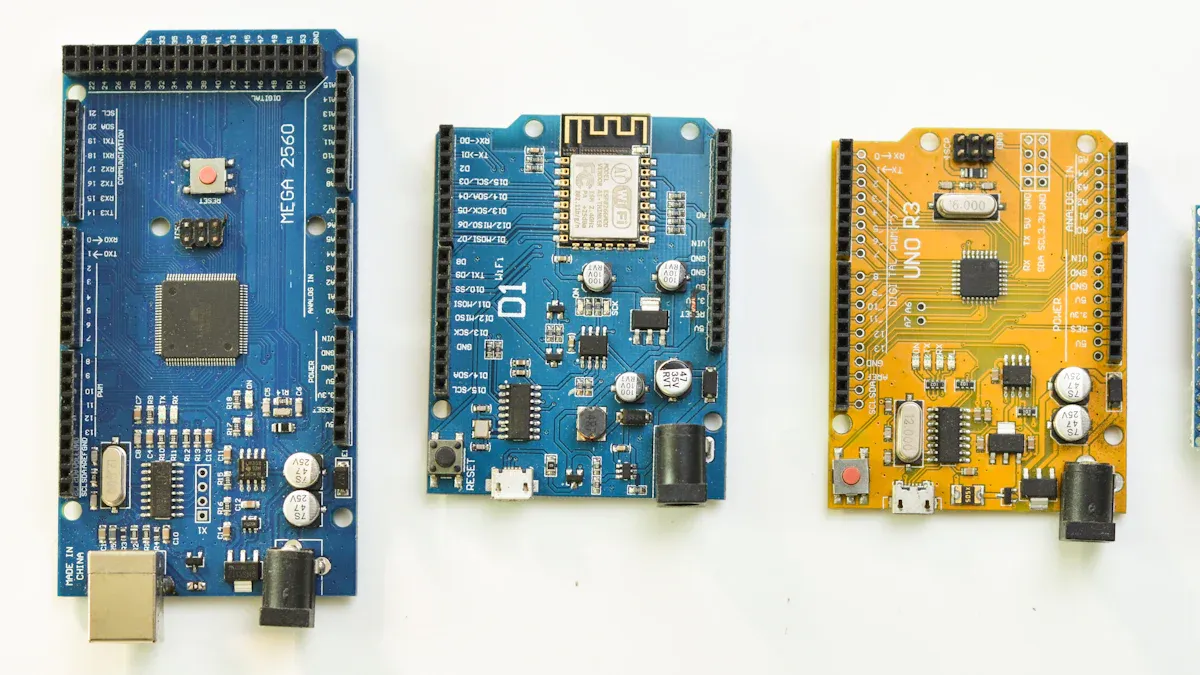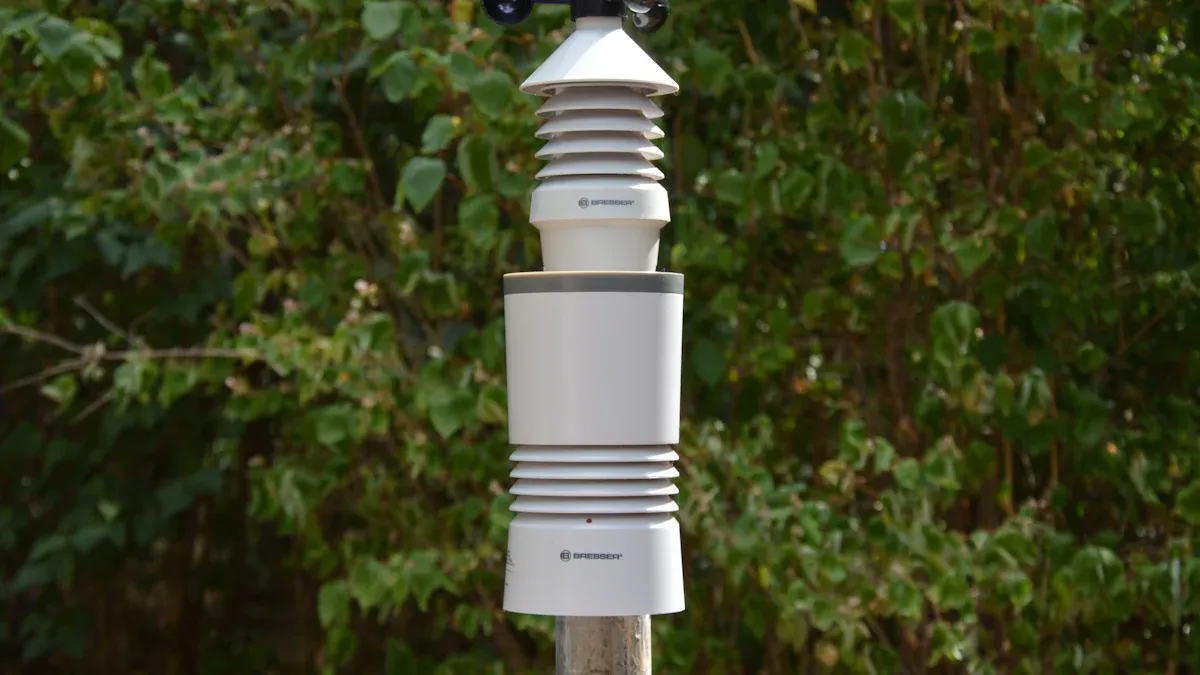What is the AD8495ARMZ-R7 and What Are Its Main Features

The AD8495ARMZ-R7 provides engineers with a reliable solution for precise temperature measurement. This integrated circuit amplifies signals from K-type thermocouples, making it easier to monitor temperatures accurately. It features built-in cold junction compensation, which helps maintain accuracy even when the environment changes. Designers often choose this device for projects that need low power and a small footprint.
Key Takeaways
The AD8495ARMZ-R7 amplifies signals from K-type thermocouples for precise temperature measurement.
It has built-in cold junction compensation that keeps readings accurate without extra parts.
The device outputs a simple, linear voltage that rises 5 mV for every 1°C increase.
It uses very low power and comes in a small package, making it ideal for portable and space-limited projects.
Engineers value it for easy integration, reliable performance, and cost-effective design.
AD8495ARMZ-R7 Features

The AD8495ARMZ-R7 stands out among temperature sensing ICs because it combines several advanced features in a single, compact package. These features make it a preferred choice for engineers who need accurate and reliable temperature measurements.
Cold Junction Compensation
Cold junction compensation is essential for thermocouple measurement accuracy. The AD8495ARMZ-R7 integrates this function directly into the chip. It uses an on-chip temperature sensor near the thermocouple connector to measure the cold junction temperature. The device then converts this temperature to an equivalent voltage and adds it to the thermocouple signal. This process ensures precise readings without the need for extra reference ICs or external calibration. Integrated cold junction compensation reduces the number of external components and simplifies the design. Many similar devices, such as the MAX6675 and AD594/AD595, also use this approach to achieve linear and accurate temperature outputs.
5 mV/°C Output
The AD8495ARMZ-R7 provides a linear output of 5 millivolts per degree Celsius. This means the voltage output increases by 5 mV for every 1°C rise in temperature. Engineers can easily interpret the output and convert it to temperature values. The linear response simplifies signal processing and reduces the need for complex calculations. This feature helps users achieve fast and accurate temperature readings.
High Gain
This IC amplifies the tiny voltage signals from K-type thermocouples. The built-in precision amplifier boosts millivolt-level inputs to a higher voltage range. High gain ensures that even small temperature changes produce noticeable output differences. The AD8495ARMZ-R7 uses internally biased amplifiers with high-impedance differential inputs. Offset adjustment capabilities help maximize accuracy. Analog Devices uses laser wafer trimming to achieve initial accuracy close to 1°C, which supports reliable measurements.
Low Power
The AD8495ARMZ-R7 operates with very low power consumption. It draws a typical supply current of only 180 μA. This efficiency matches other similar ICs, such as the AD8497ARMZ-R7 and AD8497CRMZ-R7. Low power operation makes the device ideal for battery-powered and portable applications.
IC Model | Supply Current (Typical) |
|---|---|
AD8495ARMZ-R7 | 180 μA |
AD8497ARMZ-R7 | 180 μA |
AD8497CRMZ-R7 | 180 μA |
Compact Package
The AD8495ARMZ-R7 comes in a small MSOP-8 package. This compact design saves board space and allows easy integration into tight layouts. The device requires minimal external components, which reduces complexity and cost. Engineers can use the AD8495ARMZ-R7 in a wide range of applications, including industrial, consumer, and scientific systems.
Tip: The compact size and low power features make the AD8495ARMZ-R7 perfect for portable devices and space-constrained projects.
Key features that make the AD8495ARMZ-R7 unique for temperature sensing include:
Precision amplification of thermocouple signals
Built-in cold junction compensation
Linearized output for easy interpretation
Low power consumption
Compact package
Minimal external components required
Wide operating temperature range
Specifications
Input Range
The AD8495ARMZ-R7 accepts input signals from K-type thermocouples. These thermocouples produce very small voltages when they sense temperature changes. The device can handle input voltages that match the typical output range of K-type thermocouples, which is usually between -6 mV and +54 mV. This range covers most temperature measurement needs in industrial and laboratory settings. The high input impedance of the amplifier ensures that the thermocouple signal remains accurate and stable.
Note: K-type thermocouples are popular because they work well in many environments and have a wide measurement range.
Output
This device provides a simple and easy-to-read output. The AD8495ARMZ-R7 generates a voltage that increases by 5 millivolts for every degree Celsius rise in temperature. For example, if the temperature goes up by 10°C, the output voltage increases by 50 mV. This linear output makes it easy for engineers and students to convert voltage readings into temperature values. Many microcontrollers and data loggers can read this voltage directly, which helps simplify the design of temperature monitoring systems.
Temperature Change (°C) | Output Change (mV) |
|---|---|
1 | 5 |
10 | 50 |
25 | 125 |
Accuracy
Accuracy is important for any temperature sensor. The AD8495ARMZ-R7 offers a reliable accuracy rating of ±1°C. Analog Devices lists this value in their official specification documents. This means the device can measure temperature within one degree of the actual value. Engineers trust this accuracy for critical applications, such as laboratory experiments and industrial controls. The precision comes from careful design and factory calibration, which helps users get consistent results.
Temperature Range
The AD8495ARMZ-R7 works in a wide range of temperatures. The official datasheet from Analog Devices states that the device operates from -40°C to +125°C. This broad range allows the sensor to function in cold storage rooms, outdoor equipment, and high-temperature industrial machines. Some product listings may show a smaller range, such as 0°C to 50°C, but the datasheet provides the most reliable information. Users can depend on the AD8495ARMZ-R7 for accurate measurements in many different environments.
Tip: Always check the official datasheet for the most accurate and up-to-date specifications.
AD8495ARMZ-R7 Applications

Industrial
Factories and plants use the AD8495ARMZ-R7 for temperature monitoring. This device helps workers keep machines at safe temperatures. Many engineers install it in data acquisition systems to collect temperature readings from different parts of a facility. The AD8495ARMZ-R7 also works well in HVAC systems. These systems control heating, ventilation, and air conditioning in large buildings. Accurate temperature sensing keeps the environment comfortable and safe. Some common industrial uses include:
Industrial temperature monitoring for precise sensing
HVAC systems for temperature control
Data acquisition systems for logging and measurement
Tip: Reliable temperature measurement helps prevent equipment damage and improves safety in industrial settings.
Automotive
Automotive engineers rely on temperature sensors to protect engines and other vehicle systems. The AD8495ARMZ-R7 fits into many automotive designs because it is small and uses little power. It can measure the temperature of engine parts, battery packs, and exhaust systems. Accurate readings help prevent overheating and improve performance. Many electric vehicles use temperature sensors to monitor battery health. The AD8495ARMZ-R7 supports these needs with its precise output and easy integration.
Instrumentation
Many scientific and medical devices need accurate temperature measurement. The AD8495ARMZ-R7 appears in laboratory equipment, medical monitors, and consumer appliances. Engineers use it in temperature monitoring and control systems. It also works in industrial process control, where keeping the right temperature is important for quality. Some devices use the AD8495ARMZ-R7 in data acquisition systems to record temperature changes over time. Common instrumentation applications include:
Temperature monitoring and control systems
Industrial process control
Consumer appliances
Data acquisition systems
Medical and scientific instrumentation
Note: The AD8495ARMZ-R7 helps scientists and doctors get reliable temperature data for research and patient care.
Benefits
Easy Integration
Engineers can add this temperature sensor to many types of embedded systems. The device works well with embedded microprocessors, programmable logic devices, and system-on-chip designs. It connects easily to different interface categories, such as analog switches, multiplexers, and sensor interfaces. Designers often use it with controllers, drivers, and signal buffers. This flexibility helps engineers build systems that need accurate temperature readings.
Works with microprocessors and PLDs
Connects to analog switches and multiplexers
Supports sensor and detector interfaces
Fits into many embedded system designs
Tip: The wide range of integration options makes this sensor a strong choice for both new and existing projects.
Reliable Performance
This temperature sensor gives steady and accurate results. It uses a built-in amplifier and cold junction compensation to keep readings correct. The device has a linear output, so users can trust the temperature data. Many engineers choose it for projects where safety and quality matter. The sensor works in harsh environments and keeps measuring well over time.
Delivers consistent temperature readings
Maintains accuracy in changing conditions
Supports critical applications in industry and science
Cost Effective
Many companies look for ways to save money without losing quality. This sensor helps lower costs because it needs few extra parts. Its small size saves board space, which can reduce manufacturing expenses. The low power use also cuts down on energy costs, especially in battery-powered devices.
Note: Choosing a sensor that is both affordable and reliable helps companies stay competitive.
The AD8495ARMZ-R7 stands out as a reliable thermocouple amplifier for accurate temperature measurement. Its compact design, low power use, and built-in cold junction compensation make it ideal for many applications. Key features and specifications include:
Feature | Description |
|---|---|
Cold Junction Compensation | Integrated for precise readings |
Supported Thermocouples | K, J, T, E |
Operating Range | -40°C to +125°C |
Power Consumption | Low, about 180 µA |
Package | 8-lead MSOP |
Engineers choose this device for its easy integration, stable performance, and cost efficiency.
FAQ
What type of thermocouple works best with the AD8495ARMZ-R7?
The AD8495ARMZ-R7 works best with K-type thermocouples. It also supports J, T, and E types. K-type thermocouples provide a wide temperature range and strong durability.
Can the AD8495ARMZ-R7 operate in battery-powered devices?
Yes, engineers use the AD8495ARMZ-R7 in battery-powered devices. The chip uses very little power, which helps extend battery life in portable systems.
How does cold junction compensation improve accuracy?
Cold junction compensation measures the temperature at the connection point. The chip adds this value to the thermocouple signal. This process helps the sensor give more accurate temperature readings.
Is the AD8495ARMZ-R7 easy to connect to microcontrollers?
Engineers find the AD8495ARMZ-R7 easy to connect to microcontrollers. The chip gives a linear voltage output. Most microcontrollers read this signal directly without extra conversion.
Tip: Always check the datasheet for wiring instructions and voltage levels before connecting the chip.
